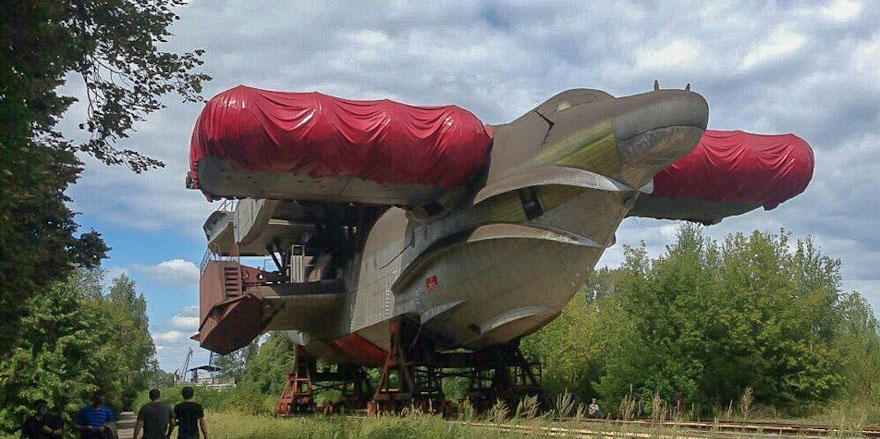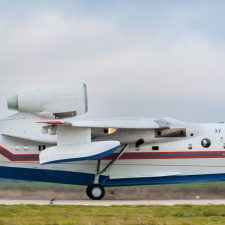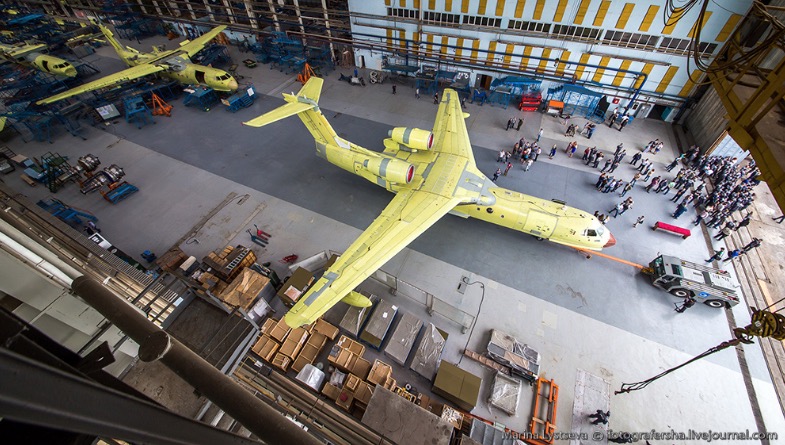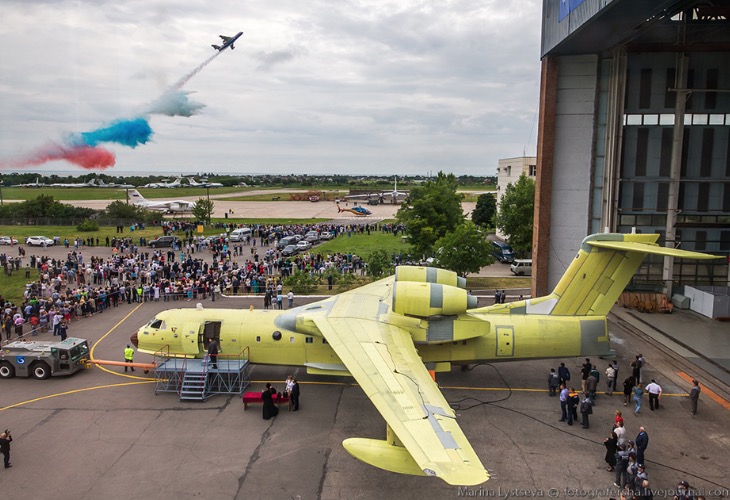
Before the USSR collapsed, their government was attempting to develop an aircraft that could carry 500 to 700 tons of cargo or serve as a water-scooping air tanker carrying 50,000 gallons of water.
It is not clear if it is a ground effect vehicle that would be restricted to flying 10 to 20 feet above a surface, or if it could also fly high enough to drop water on wildfires. It is a little difficult to determine the details based on the very crudely machine-translated article from Aviation of Russia, which is below:
“The Central Design Bureau (TsKB) for hydrofoil ships named after Alekseev (Nizhny Novgorod) has good groundwork on heavy ekranoplans, which could be used to extinguish large forest fires with greater efficiency than airplanes, reported Chairman of the Board of Directors – General Designer of the Central Design Bureau Georgy Antsev.
“ ‘Speaking of fires, we have serious work on the development of the Spasatel ekranoplan, where we go into tonnages from 500 to 700 tons. We have a series of proposals for the construction of ekranoplanes, where we can already talk about the tasks of fire fighting,’ Antsev said.
“According to him, such an ekranoplan could take about 200 tons of water as a load and dump it in the same time that IL-76 aircraft dump only 40 tons. Antsev emphasized that the advantage of ekranoplanes is that water does not need to be pumped at airfields from fire tanks, as is now happening with the IL-76. It takes a lot of time and is technically difficult. WIG can take water in large rivers or large bodies of water.
“Such characteristics of an ekranoplan, such as excess weight, characteristic of high-strength machines, designed for good performance in conditions of frequent water hammer, are compensated by the economy when flying in screen mode. In addition, the ekranoplanes are unpretentious to the places of basing – they can stand on the water or go ashore with a slight slope (up to 5%).
“Antsev added that he does not consider the ekranoplanes a panacea for extinguishing forest fires, but noted their effectiveness in the fight against large foci.
” ‘In a disaster, there is no one means. For something you still have to get and put out by plane and helicopter, you have to get somewhere on foot. In high-intensity fires and the battle over the area, the ekranoplan gives a significant gain in the amount of water discharged by unit area in a shorter time. If we talk about intense fires, it helps to ‘crush’ the source,’ said the general designer.
“Wing Rescuer is the second instance of the project 903, the first was an impact Wing-rocket carrier ‘Lun’. The ‘rescue’ was also pledged as a missile carrier, but the collapse of the USSR led to the cessation of financing and the conservation of the vessel at the 95% readiness stage.”
Thanks and a tip of the hat go out to Isaac. Typos or errors, report them HERE.






